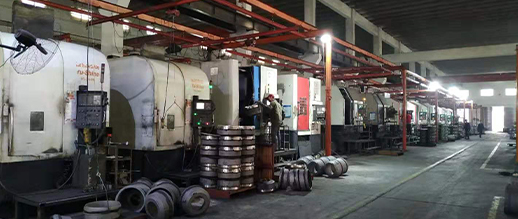
-
 Afrikaans
Afrikaans -
 Albanian
Albanian -
 Amharic
Amharic -
 Arabic
Arabic -
 Armenian
Armenian -
 Azerbaijani
Azerbaijani -
 Basque
Basque -
 Belarusian
Belarusian -
 Bengali
Bengali -
 Bosnian
Bosnian -
 Bulgarian
Bulgarian -
 Catalan
Catalan -
 Cebuano
Cebuano -
 Corsican
Corsican -
 Croatian
Croatian -
 Czech
Czech -
 Danish
Danish -
 Dutch
Dutch -
 English
English -
 Esperanto
Esperanto -
 Estonian
Estonian -
 Finnish
Finnish -
 French
French -
 Frisian
Frisian -
 Galician
Galician -
 Georgian
Georgian -
 German
German -
 Greek
Greek -
 Gujarati
Gujarati -
 Haitian Creole
Haitian Creole -
 hausa
hausa -
 hawaiian
hawaiian -
 Hebrew
Hebrew -
 Hindi
Hindi -
 Miao
Miao -
 Hungarian
Hungarian -
 Icelandic
Icelandic -
 igbo
igbo -
 Indonesian
Indonesian -
 irish
irish -
 Italian
Italian -
 Japanese
Japanese -
 Javanese
Javanese -
 Kannada
Kannada -
 kazakh
kazakh -
 Khmer
Khmer -
 Rwandese
Rwandese -
 Korean
Korean -
 Kurdish
Kurdish -
 Kyrgyz
Kyrgyz -
 Lao
Lao -
 Latin
Latin -
 Latvian
Latvian -
 Lithuanian
Lithuanian -
 Luxembourgish
Luxembourgish -
 Macedonian
Macedonian -
 Malgashi
Malgashi -
 Malay
Malay -
 Malayalam
Malayalam -
 Maltese
Maltese -
 Maori
Maori -
 Marathi
Marathi -
 Mongolian
Mongolian -
 Myanmar
Myanmar -
 Nepali
Nepali -
 Norwegian
Norwegian -
 Norwegian
Norwegian -
 Occitan
Occitan -
 Pashto
Pashto -
 Persian
Persian -
 Polish
Polish -
 Portuguese
Portuguese -
 Punjabi
Punjabi -
 Romanian
Romanian -
 Russian
Russian -
 Samoan
Samoan -
 Scottish Gaelic
Scottish Gaelic -
 Serbian
Serbian -
 Sesotho
Sesotho -
 Shona
Shona -
 Sindhi
Sindhi -
 Sinhala
Sinhala -
 Slovak
Slovak -
 Slovenian
Slovenian -
 Somali
Somali -
 Spanish
Spanish -
 Sundanese
Sundanese -
 Swahili
Swahili -
 Swedish
Swedish -
 Tagalog
Tagalog -
 Tajik
Tajik -
 Tamil
Tamil -
 Tatar
Tatar -
 Telugu
Telugu -
 Thai
Thai -
 Turkish
Turkish -
 Turkmen
Turkmen -
 Ukrainian
Ukrainian -
 Urdu
Urdu -
 Uighur
Uighur -
 Uzbek
Uzbek -
 Vietnamese
Vietnamese -
 Welsh
Welsh -
 Bantu
Bantu -
 Yiddish
Yiddish -
 Yoruba
Yoruba -
 Zulu
Zulu
Upgrading Silverado from Drum to Disc Brakes for Enhanced Performance and Safety
How to Convert Drum Brakes to Disc Brakes on a Silverado
Upgrading from drum brakes to disc brakes on your Chevy Silverado can significantly enhance braking performance and reliability. While drum brakes are adequate for general use, disc brakes provide superior stopping power, shorter stopping distances, and improved heat dissipation. This guide will walk you through the process of converting your Silverado’s drum brakes to disc brakes, ensuring a smoother and safer ride.
Understanding the Basics
Before diving into the conversion process, it’s important to understand the differences in brake systems. Drum brakes work by using friction to slow down the vehicle through the application of brake shoes against a rotating drum. In contrast, disc brakes utilize a caliper to squeeze brake pads against a rotating disc (or rotor), allowing for more efficient heat dissipation and greater stopping power, especially during heavy use.
Tools and Materials Needed
To successfully convert drum brakes to disc brakes, you’ll need the following tools and materials
- New disc brake conversion kit (including rotors, calipers, pads, brackets) - Lug wrench - Socket set and ratchet - Brake fluid - Brake cleaner - Jack and jack stands - Torque wrench - Safety glasses and gloves - Line wrenches (if necessary)
Step-by-Step Conversion Process
1. Preparation Begin by ensuring your Silverado is on a flat surface. Use the jack to lift the rear of the vehicle, placing jack stands for safety. Remove the rear wheels using the lug wrench.
how to convert drum brakes to disc brakes silverado

2. Remove Drum Brakes Remove the drum brake assembly. This includes taking off the drum, which may require a bit of force if it’s rusted or malfunctioning. Next, remove the brake shoes, springs, and any other components attached.
3. Install the New Rear Disc Brake Kit Most conversion kits are designed for specific models, so carefully follow the instructions provided with your kit. This usually involves installing the new brake brackets onto the axle housing, then mounting the new rotors. Ensure all parts are tightly secured using the appropriate torque specifications.
4. Attach Calipers Install the calipers onto the newly mounted rotors. Make sure the brake pads are positioned correctly within the calipers. If your kit includes new brake lines, now is the time to swap out the old lines for the new ones to accommodate the disc brakes.
5. Bleed the Brakes Once everything is installed, it’s essential to bleed the brake system. This process removes air from the lines, ensuring optimal braking performance. Start by filling the brake fluid reservoir and using the brake bleeder valve on each caliper. Have a partner pump the brake pedal to push fluid through, ensuring a steady stream comes out without bubbles.
6. Reinstall Wheels With the new disc brakes fully installed and bled, reinstall your Silverado's wheels. Use the lug wrench to tighten the lug nuts and lower the vehicle back to the ground.
7. Test Drive Before hitting the highways, take your Silverado for a slow test drive in a safe area. Gradually apply the brakes to ensure they’re functioning correctly, and listen for any unusual noises.
Conclusion
Converting your Silverado from drum brakes to disc brakes can significantly enhance your truck's stopping performance, especially under strenuous conditions. By following the steps outlined above, you can undertake this upgrade with confidence. Remember to adhere to safety precautions throughout the process and consult a professional mechanic if you feel unsure about any aspect of the installation. With improved brake performance, you’ll enjoy a safer and more responsive driving experience.
-
What Are Drum BrakesNewsJul.07,2025
-
Understanding Brake Drum MaterialNewsJul.07,2025
-
Semi-Trailer Brake Drum: A Key Component for Extreme Loads and Long-Distance TransportNewsJul.07,2025
-
Drum Brake Pads for SaleNewsJul.07,2025
-
Brake Drums for SaleNewsJul.07,2025
-
Brake Drum ManufacturerNewsJul.07,2025
-
Aluminum Brake Drums: The Future of High-Performance CarsNewsJul.07,2025
